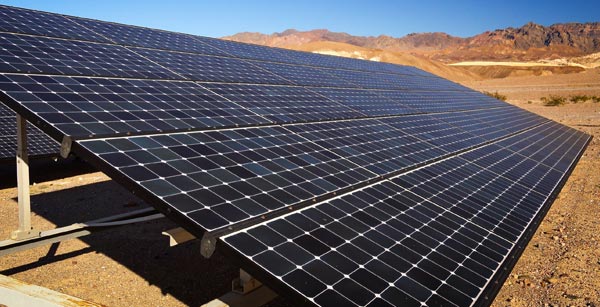Solar Farms in Arizona: Harnessing Sunlight for a Sustainable Future

Arizona’s vast landscapes and abundant sunshine make it a prime location for solar farms, which are pivotal in the transition towards sustainable energy. Solar energy harnesses the state’s natural resources to produce clean, renewable electricity, crucial for reducing carbon emissions and combating climate change. In a region blessed with over 300 days of sunshine per year, solar farms can generate power at scale, contributing significantly to the energy grid while preserving the environment. This solar capacity is vital for a sustainable future, ensuring that Arizona remains at the forefront of renewable energy innovation and independence.
#
Property
County
Location
Parcel #
Acres
Comments
1
Verma La Osa Ranch
Pinal
Interstate 10 & Sasco Rd in Eloy, Az
409110070
2000
Close to the substation and 230kv going through the property
2
Verma La Osa Ranch
Pinal
Interstate 10 & Sasco Rd in Eloy, Az
40914005A
1000
230 KV line going through the property
3
VERMA D-OB 387/NARRAMORE 20, LLC
Maricopa
387 Ave & Narramore in Tonopah, Az
40146006B
20
For battery storage; adjacent to SEPII Solar Power plant and Arlington Valley Solar power plants. (Please see attached map that highlights ownership within a 1 mile radius)
4
Verma-MD2 WAG 347/Salome 150, LLC
Maricopa
347 Ave & Salome Hwy in Tonopah, Az
50433100
40 – 150
High potential for battery storage project or community solar
5
Verma 256 397 Baseline 40 LLC
Maricopa
397 Ave & Baseline in Tonopah, Az
50643099
40
Community solar property
6
Sonoran Ridge Investments 7 LLC
Yuma
Ventura Rd & Avenue 63 E in Dateland, Az
17613017
40 – 120
Community solar property
There are some key steps to be followed to tap the investment opportunities in solar land.
- As an investor, you need to first identify the vastness of the project that will fit in the land. The thumb rule for every megawatt is 6-8 acres. Megawatt of solar offers sufficient power for 200 homes. For ground mounted solar projects on wholesale basis (for selling power to utility), focus is to be on projects being minimum of a megawatt for justifying development costs.
- Interconnecting the project: The first significant hurdle faced in the project development is interconnection. This means, permission is granted by the utility to connect and operate solar project along with utility grid. But in some areas, it can be expensive to viably interconnect. Therefore, it becomes crucial to identify whether the project can be affordably interconnected.
- Obtain power purchase agreement: Obtaining power purchase agreement is considered to be the biggest hurdle towards development. Plenty of competition is noticed in limited programs. Hence, for obtaining PPA, real strategy will be required.
- ReMAT: A new law has been passed on recently pursuant to SB-32. Presently, contracts under ReMAT program is being accepted by utilities for solar along with other renewable to about 3MW in size. The program size is limited. It means for PPAs, competition is likely to be fierce. At some point of time, the program can be expanded.
- RAM: It stands for Renewable Auction Mechanism and is an auction program meant for every type of renewable energy that are 20MW or lesser. Instead of adjustable price, like that of ReMAT, pricing of RAM depends completely on what is being bidded by developers in the program. For three years, the winning bid prices does not get disclosed. Hence, the best price is to be carefully determined to bid in every RAM round. When compared to ReMAT, it is a bigger program having capacity of around 800MW. But projects that are lesser than 3MW are found not to be eligible to be bid into the RAM.
- Permitting: It is an easy step involved in the overall development process, meant mainly for smaller projects. The solar project at 3MW is around 20 acres. The full EIR could be necessary for larger projects. However, by eliminating EIR requirements, negative scale economies can be captured with regards to faster permitting times and lower costs.
Once the landowner/developer entitles fully the planned project (PPA, permitting and interconnection), it can be either flipped for profit or developed for long term revenue.

